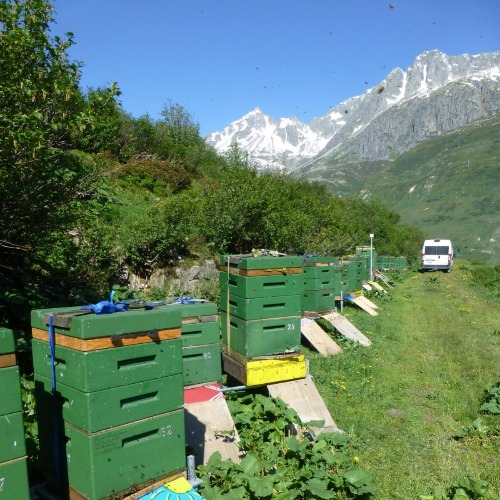Alpenhonig, or “Alpine honey,” is a golden treasure that originates from the pristine and picturesque Alpine regions of Europe. With its unique blend of flavors and distinct characteristics, Alpenhonig is not only a delectable treat but also a reflection of the natural beauty and biodiversity found in the Alpine landscapes. In this article, we will embark on a journey to discover the origins, production, flavor profile, and cultural significance of Alpenhonig, highlighting its role as a symbol of the Alps’ tranquil charm.
The Origins of Alpenhonig
Alpenhonig is the result of honeybees’ tireless efforts to collect nectar from the diverse Alpine flora. The Alpine regions of Europe, including countries like Switzerland, Austria, Italy, and France, are home to an abundance of wildflowers, herbs, and alpine meadows that contribute to the unique taste and qualities of Alpenhonig.
The Production of Alpenhonig
The production of Alpenhonig follows the same fundamental process as any other honey but is imbued with the distinctive flavors of the Alpine landscape:
- Foraging: Honeybees explore the Alpine flora, gathering nectar from a wide variety of wildflowers, including alpine clover, thyme, and lavender.
- Nectar Collection: Bees collect nectar from these wildflowers, transforming it into honey within the hive through enzymatic processes.
- Hive Activity: Inside the hive, bees work to reduce the water content of the nectar, increase its sugar concentration, and add enzymes like glucose oxidase, which contributes to honey’s natural preservative properties.
- Ripening: Over time, the nectar ripens into honey, developing its unique flavor and texture.
- Harvesting: Beekeepers carefully extract the honeycombs from the hives, containing the precious Alpenhonig.
The Flavors of Alpenhonig
Alpenhonig is celebrated for its distinct flavor profile, which is influenced by the diverse range of alpine flora from which the bees collect nectar. Key characteristics of Alpenhonig include:
- Floral Notes: Alpenhonig boasts delicate floral notes with hints of mountain herbs and alpine meadows, offering a unique and complex flavor.
- Light and Sweet: It is typically light in color and has a mild sweetness that is not overpowering, making it a versatile choice for various culinary uses.
- Nutritional Benefits: Alpenhonig retains the natural vitamins, minerals, and antioxidants found in the Alpine flora, making it a nutritious addition to your diet.
- Cultural Significance: In Alpine regions, Alpenhonig is not just a food but a symbol of the traditional way of life, the harmony between humans and nature, and the breathtaking beauty of the Alps.
Conclusion
Alpenhonig, or Alpine honey, is a sweet ambassador of the stunning Alpine landscapes and the dedicated work of honeybees. Its unique flavor and cultural significance make it a sought-after delicacy, not only in the Alpine regions but also in international culinary circles. Whether drizzled over fresh bread, used as a sweetener in tea, or incorporated into gourmet dishes, Alpenhonig offers a taste of Alpine tranquility that is both delicious and enriching. So, the next time you savor the exquisite flavors of Alpenhonig, take a moment to appreciate the natural beauty and cultural heritage it represents—a sweet nectar from the heart of the Alps.


